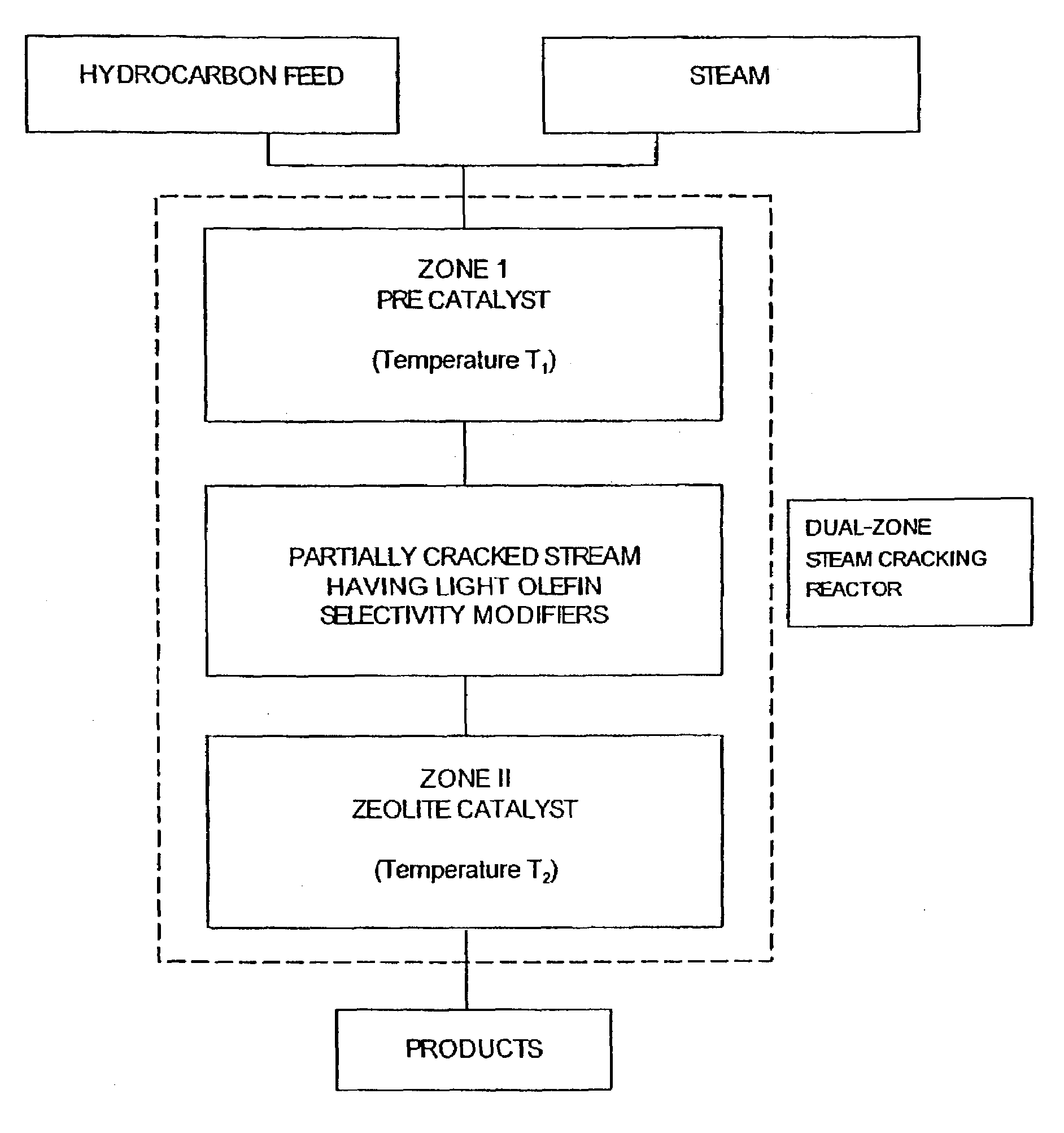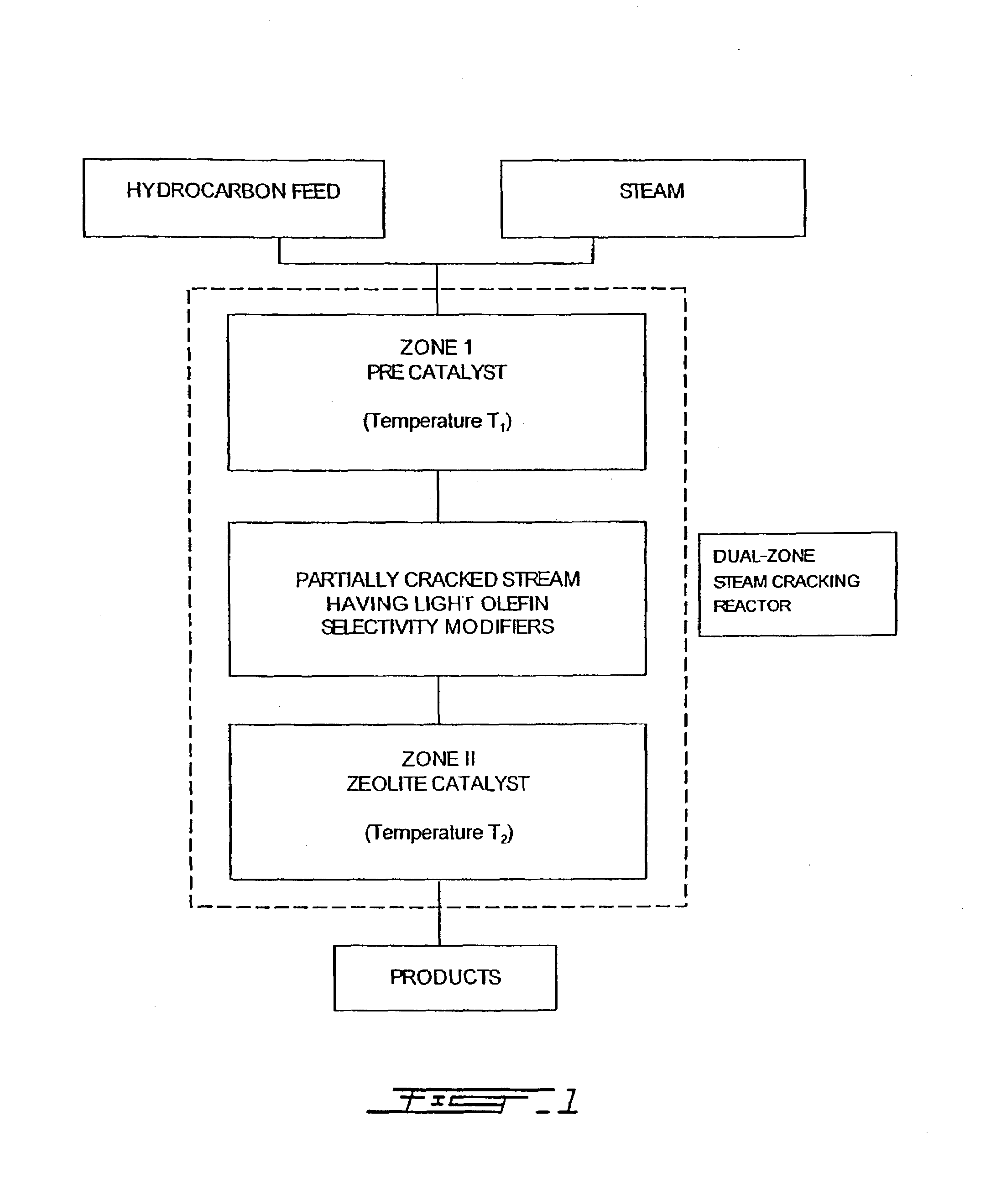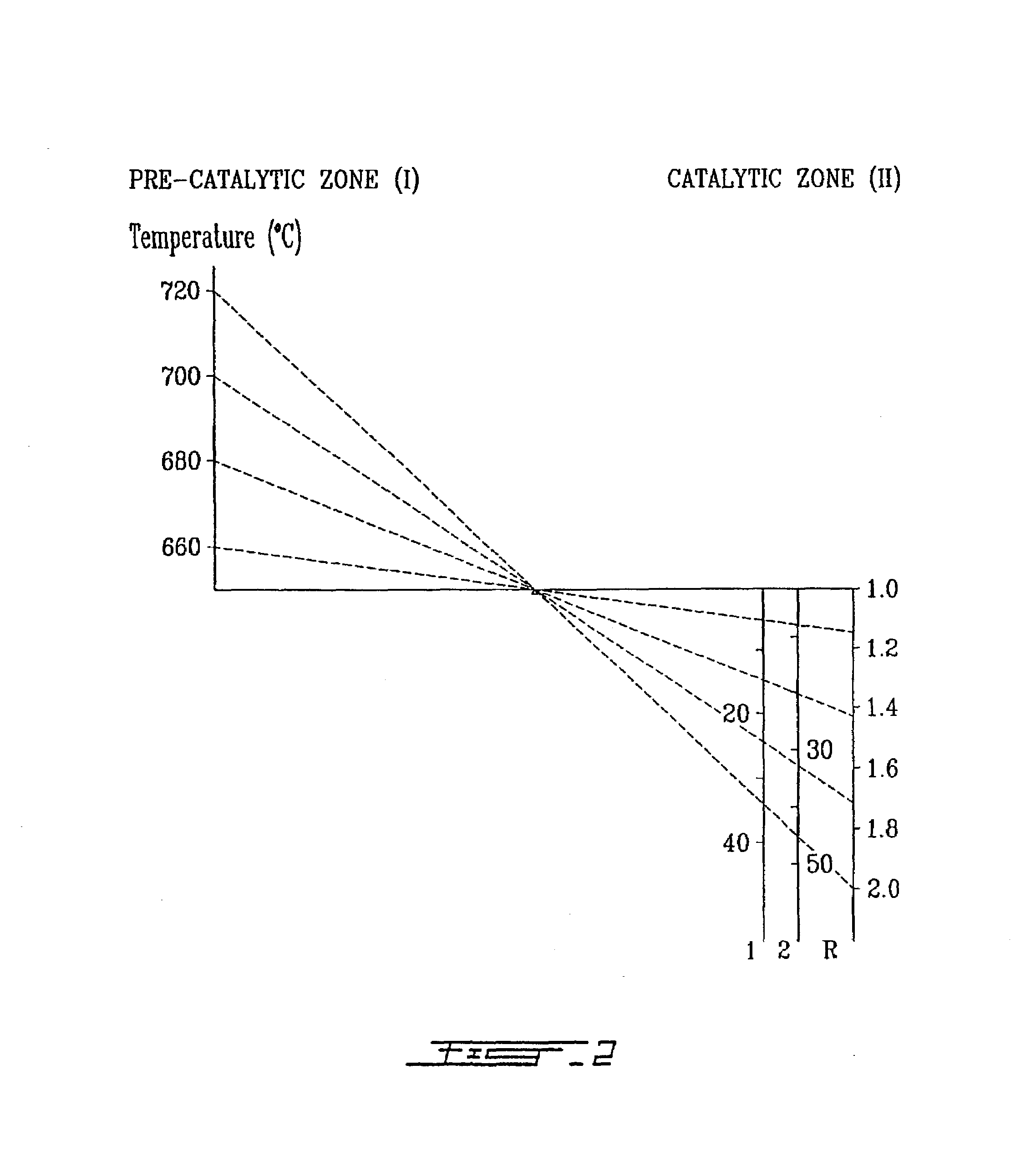Method and apparatus for selective deep catalytic cracking of hydrocarbons
a deep catalytic cracking and hydrocarbon technology, applied in hydrocarbon preparation catalysts, hydrocarbon oil treatment products, bulk chemical production, etc., can solve the problems of inflexible steam cracking technology to respond to these or other market trends, and achieve the effect of increasing the total conversion of n-hexane and increasing the yield of light olefins
- Summary
- Abstract
- Description
- Claims
- Application Information
AI Technical Summary
Benefits of technology
Problems solved by technology
Method used
Image
Examples
example
[0033]An example of the method of the present invention will now be described in relation to the catalytic steam cracking of n-hexane (used as a model molecule for petroleum naphthas). Although the present invention has been experimentally demonstrated based on n-hexane, this is an excellent model molecule for predicting the behaviour of other hydrocarbons, in particular longer chain hydrocarbons and their mixtures such as the ones found in petroleum naphthas, since the catalytic behaviors of these feeds are analogous.
[0034]N-hexane when sent together with some steam through Zone I, undergoes partial steam-cracking and dehydrogenation. The products of this conversion include olefins and diolefins which are known to increase—by hydrogen transfer or olefin dissociation—the selectivity towards light olefins during the reaction over zeolite based catalysts.
[0035]The probable light olefin selectivity modifiers generated in Zone I and affecting the activity and selectivity of the zeolite ...
PUM
| Property | Measurement | Unit |
|---|---|---|
| Temperature | aaaaa | aaaaa |
| Temperature | aaaaa | aaaaa |
| Temperature | aaaaa | aaaaa |
Abstract
Description
Claims
Application Information
 Login to View More
Login to View More - R&D
- Intellectual Property
- Life Sciences
- Materials
- Tech Scout
- Unparalleled Data Quality
- Higher Quality Content
- 60% Fewer Hallucinations
Browse by: Latest US Patents, China's latest patents, Technical Efficacy Thesaurus, Application Domain, Technology Topic, Popular Technical Reports.
© 2025 PatSnap. All rights reserved.Legal|Privacy policy|Modern Slavery Act Transparency Statement|Sitemap|About US| Contact US: help@patsnap.com



